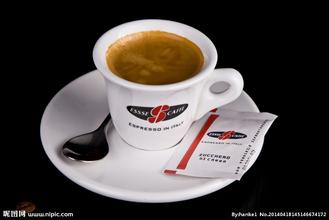The practice of American Coffee is introduced by Mount Jintamani, a coffee producing area in the United States.
Inety Plus thought that coffee itself is a kind of fruit, so he made his own exclusive treatment according to taste (W2), (H2), and (N2). When you understand traditional coffee processing, you will find that a small amount of adjustment can blur the distinction between them. For example, a little washing can be added at different stages of the densification process to achieve a lighter and brighter washing taste; controlling the degree of pulp fermentation can also make a sun closer to the effect of a dense treatment, or dense treatment can be more like a solarization.
According to the degree of effect of fruit flavor on taste, it can be divided into: W _ 2 ~ H _ 2 ~ 2 ~ 2. The distinction between these three flavors can also be simply understood as treatment methods: W2=WASH washing treatment, H2=Honey honey treatment, N2=NATURE sun treatment:
W2: lower (Low) fruit tonality; emphasizes brightness, acidity, and floral aroma.
H2: warm (Moderate) fruit tonality; emphasizes sweetness, fruit taste (rather than fruit flavor), and tea taste.
N2: higher (High) fruit tonality; emphasizes unrestrained, sweet and sour, jam and dried fruit flavors.
Solkiln: the so-called Solkiln method is a special treatment of 90 + company's patented technology. They dry the fresh coffee fruit in a house originally used to dry wood. In this house, special equipment is used to control the temperature and humidity needed to maintain the stability of the internal environment, while eliminating the impact of the local humid climate on the coffee.
Red: the so-called "red treatment" is a special treatment carried out by the 90 + team through their own patented drying technology, which makes the color of shelled coffee beans show varying degrees of red. This treatment will once again enhance the aromatic characteristics of the coffee itself, and the taste will reflect a strong sweetness with obvious fruit flavor.
Ruby: the so-called "ruby" treatment is also a more difficult and extreme way of dealing with red. So that the red treatment of sweetness and fruit to the extreme, accidentally over will become a bad fermentation taste of the extremely bad areas. This method also requires a lot of manual screening. Every raw bean must meet the "ruby" standard in order to be called a "ruby" bean. It has been eliminated and tried many times, and the last point is left to meet the standard of "ruby", so it is expensive.

Important Notice :
前街咖啡 FrontStreet Coffee has moved to new addredd:
FrontStreet Coffee Address: 315,Donghua East Road,GuangZhou
Tel:020 38364473
- Prev

Taste and flavor characteristics of Aldumara coffee produced in Mexico
Non-alcoholic Mexican coffee often goes with milk. Heat a cup of milk, a teaspoon of cinnamon powder and a teaspoon of vanilla powder in a pot at medium temperature, not too hot, and do not boil the milk. Then add the cocoa powder, dissolve and stir well. If you like chocolate, you can use chocolate paste instead of cocoa powder and milk. Let the milk dry for about 5 minutes, wait until
- Next

Ethiopian Limu Coffee introduces the Manor of Coffee producing area
Coffee is Ethiopia's most important export cash crop and the main source of Ethiopia's foreign exchange earnings. Ethiopia's coffee exports account for about 3% of the world market, making it the eighth largest coffee exporter in the world. Coffee exports increased steadily from 58000 tons in 1990 to 110000 tons in 1995-1996 and remained at this level in the following years. 2001-2002
Related
- Does Rose Summer choose Blue, Green or Red? Detailed explanation of Rose Summer Coffee plots and Classification in Panamanian Jade Manor
- What is the difference between the origin, producing area, processing plant, cooperative and manor of coffee beans?
- How fine does the espresso powder fit? how to grind the espresso?
- Sca coffee roasting degree color card coffee roasting degree 8 roasting color values what do you mean?
- The practice of lattes: how to make lattes at home
- Introduction to Indonesian Fine Coffee beans-- Java Coffee producing area of Indonesian Arabica Coffee
- How much will the flavor of light and medium roasted rose summer be expressed? What baking level is rose summer suitable for?
- Introduction to the characteristics of washing, sun-drying or wet-planing coffee commonly used in Mantenin, Indonesia
- Price characteristics of Arabica Coffee Bean Starbucks introduction to Manning Coffee Bean Taste producing area Variety Manor
- What is the authentic Yega flavor? What are the flavor characteristics of the really excellent Yejasuffi coffee beans?

